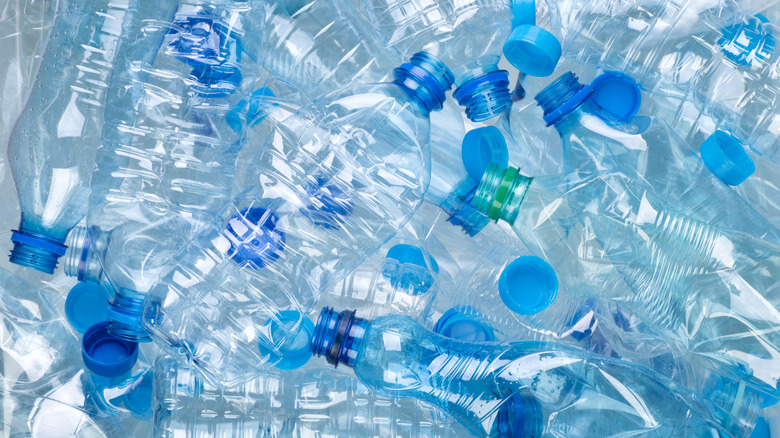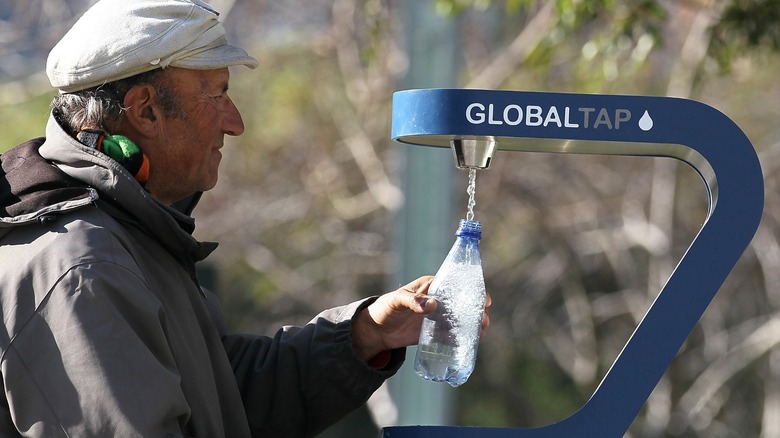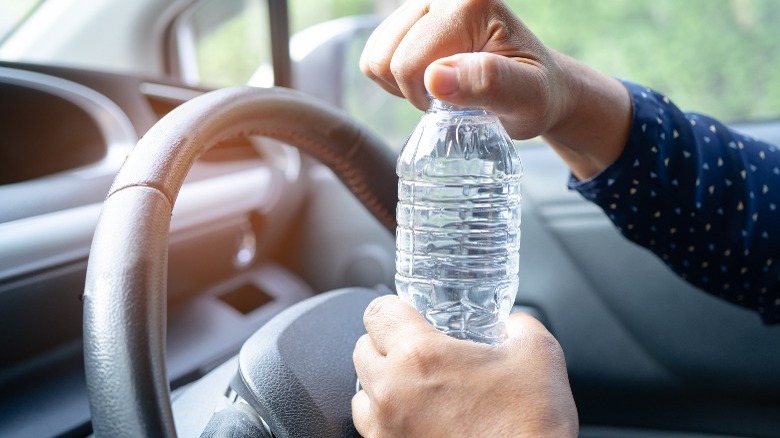You Should Probably Stop Refilling Plastic Water Bottles
Once you've already bought and drank a plastic water bottle from the store, it may be tempting to hold onto it. Sure, it may feel easier on both your wallet and the environment to refuse to purchase more plastic, but if you're really thirsty, it's probably best to just toss it and get another bottle. Better yet, it's always a great idea to carry around a reusable metal reusable container. In either case, you'd be avoiding the health hazards that drinking from a used plastic water bottle holds.
The synthetic polymers in plastic take a lot longer to break down than organic materials, meaning that it may be hundreds to thousands of years before they actually dissolve. Instead, this waste turns into microplastics, tiny particles less than 5 millimeters (0.20 inches) in size that are currently invading ocean ecosystems and popping up in seafood and drinking water. One study conducted in 2018 by Penn State Director of Sustainability Sherri Mason reported that out of 259 bottles of water "purchased in 19 locations in nine different countries," 93% were, on some level, contaminated with microplastics. Unfortunately, microplastics are making their way into everything we eat and drink, but plastic water bottles are particularly guilty of carrying the materials.
The dangers of BPA
The main environmental and health offender in plastic water bottle production is the chemical bisphenol A, or BPA as its most commonly referred to. Although the effects of BPA in large quantities are still relatively unknown, the compound is known to be an endocrine disruptor that affects hormone levels and the reproductive system. The U.S. Food and Drug Administration has cleared low-level use of BPA in consumer products, but controversy and debate rage on about the long-term consequences of extended exposure. Suffice it to say, it's better to limit your use of anything that may increase the consumption of BPA.
Although BPA is always present in the plastic that makes up water bottle containers, the chemicals leech into the water during use, especially if they're more exposed to heat. That means the longer you use a disposable bottle, the more the BPA in the plastic is melting into the drink inside. Plastic water bottles are also more at risk of growing bacteria when they're filled up again, and some sources like WebMD say that these fast-growing germs are actually a bigger, immediate worry than slow-leaching chemicals.
Alternatives to plastic water bottles
The obvious alternative to reusing plastic water bottles is to use an aluminum or stainless steel bottle, though that comes with its own caveats, too. Not everyone has access to clean drinking water at all times, and unfortunately, microplastics have made their way into tap water and other sources, as well. These metal containers can also grow harmful bacteria if they're not regularly and properly cleaned. Still, it's better than actively consuming materials from a plastic bottle.
If you must use a plastic water bottle, learn to recognize the different types of plastic recycling symbols, marked with a number surrounded by a group of triangle-shaped arrows. #1 and #2, plastics, which designates polyethylene terephthalate (PET) and high-density polyethylene (HDPE) are preferable to the #7 "other" label, which is usually the sign of BPA in the context of water bottles. Still, all of these have the potential to disrupt your hydration with harmful chemicals, and all are manufactured with the intention of one-time use, so refilling any of them back up still isn't ideal.



